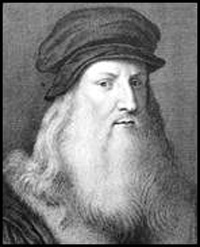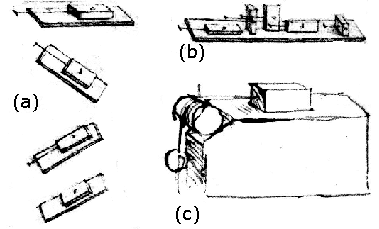 |
 |
|
Original scetches from Leonardos experiments on friction. |
Leonardo da Vinci has the credit to be the first who made quantitative studies on the problem of friction. Leonardo's experimental setup for friction measurements was rather simple. He measured the angle a of an inclined plane, where a body, put on the plane, started sliding and the weight needed to make a block on a table moving. With his methods he was only able to measure static friction and most probably he wasn't aware of the difference between static and kinetic friction. Leonardo found the following two laws of friction, in which we essentially recover friction laws 1 and 2.}
- The friction made by the same weight will be of equal resistance at the beginning of its movement although the contact may be of different breadths and lengths.
- Friction produces double the amount of effort if the weight be doubled.
Leonardo defined a friction coefficient as the ratio of the friction divided by the mass of the slider. Experimentally, he found a universal friction coefficient of 0.25 independent of the material. This universal friction coefficient of 0.25 is called Bilfinger value. Many other friction scientists after Leonardo believed in the existence of a universal material independent friction coefficient. However, most of them found another value but all in the range 0.1 - 0.6.
LinksLeonardo virtuell
|